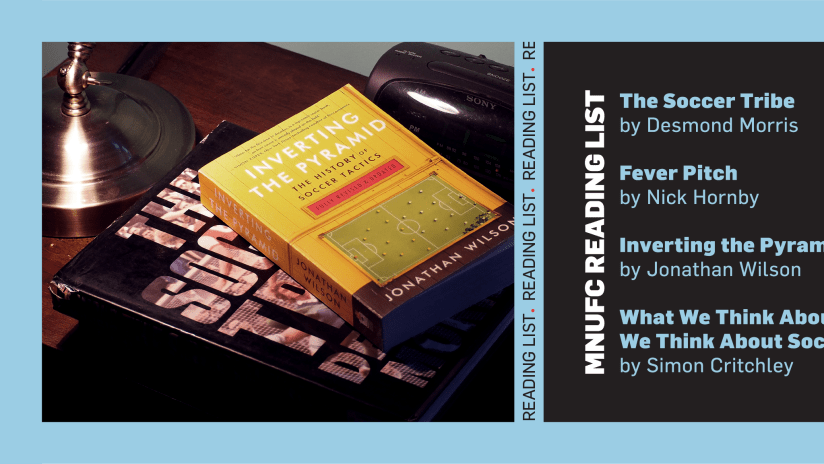Since we’ve got a bit of time on our hands with the MLS season suspended, we thought it would be a good time to relax, have a little fun and stretch out a bit with some posts beyond the usual recaps, preview and interviews. Here we’ve got four books on the beautiful game from very different perspectives.
The Soccer Tribe
Desmond Morris
Desmond Morris’ classic coffee table-sized book about soccer culture was originally published in 1981 but has gone through several editions since, including as recently as 2016. Morris was trained as a zoologist and ethnologist, which gives his prose a charmingly Jane Goodall-esque feel as he attempts to plumb the depths of players and fans alike as if they were some kind of wild species.
Consider his description of one of the signature soccer celebrations, what Morris terms “The Leaping Air-punch”: “As the scorer runs back along the pitch he suddenly leaps in the air with a raised fist and then brings it down in a powerful over-arm blow. The blow strikes the air, but symbolically it is crashing down on the defeated heads of the enemy. The over-arm downward-striking punch is the basic attack movement of the human species. It is seen in very tiny children when they first start to fight in nursery schools, and in the panic moments of adult riots. The frontal punch of the boxer has to be learnt, but the over-arm down-punch seems to be inborn, and it is this one that we revert to when wishing to make a symbolic demonstration of our triumphant power.”
With lots of photos both full-color and black and white from many different eras, The Soccer Tribe is an easy book to pick up and browse through just about any time.
Fever Pitch
Nick Hornby
British author Nick Hornby is best known for his 1995 novel High Fidelity, which spawned both a John Cusack movie in 2000 and a series currently running on Hulu and starring Zoë Kravitz. But his first book was 1992’s Fever Pitch, an extended ode to his Arsenal fandom told through a series of games from his childhood through his early thirties. It’s also, naturally, a coming of age story and Hornby weaves soccer and his life together with dark wit and in a way true fans of any sport will appreciate. When he’s 15, Hornby comes upon a Crystal Palace fan outside the stadium who had died of a heart attack during the game. “It worries me,” he wrote, “the prospect of dying in mid-season like that.”
Inverting the Pyramid
Jonathan Wilson
If you want to dig in — and I mean really DIG IN — on soccer tactics, there is likely no finer tome than Inverting the Pyramid. Wilson’s in-depth history of the form and play of the game begins at the very beginning when the sport looked a lot more like the brutal game of rugby from which it was born than the fluid, elegant game we’ve come to know. Wilson describes the game’s evolution with both affection and reverence, displaying a good eye for the exacting detail and walking us logically through the steps that took us from a game with six or seven forwards through innovations like the WM formation and up to today.
But Wilson also goes beyond the formations — although there are certainly plenty of diagrams from some of the most famous games of all time. Over the 150-odd years that soccer has been around, there has been major tactical trends that took the game by storm and Wilson details each of them in fine detail, including a particularly engrossing dive into Dutch Total Football in the ‘70s. Ever wondered why the legendary Italian defensive scheme is called catenaccio or what exactly a regista does? Look no further than Inverting the Pyramid.
What We Think About When We Think About Soccer
Simon Critchley
If your concerns with the game hew more towards the emotional than the formal, Simon Critchley’s introspective What We Think About When We Think About Soccer might be for you. A phenomenologist by trade — that is, a philosopher focused on consciousness and how we perceive the everyday — Critchley wears his love for the game on his sleeve, but he’s also deeply concerned with why we love the game so much. While he might not ultimately come up with anything as clear as an answer, it’s the investigation that compels, with Critchley circling around his object of inquiry and staking a claim that what makes the game compelling is both its simplicity and a primal complexity that the simplicity masks and keeps forever just out of reach. For Critchley, the game of soccer exists midway between so many elements of the human experience —between intention and luck, between community and individuality, between comfort and tension — and it is precisely that which makes it both deeply resonant and maddeningly ineluctable.





